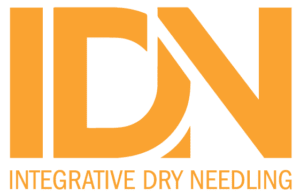Neurophysiological Effects of Latent Trigger Point Dry Needling on Spinal Reflexes
J Neurophysiol. 2024 Dec 20. doi: 10.1152/jn.00366.2024. Online ahead of print. ABSTRACT Deep dry needling (DDN) is a method to treat muscle
Prior dry needling training required.
No previous dry needling training required.
These are not dry needling courses.
Learn the neuroRelease technique ON-DEMAND
Learn MSK ultrasound On-Demand
Learn Neurologic Dry Needling On-Demand for Craniocervical conditions
Exclusive Access for IDN clinicians that have taken a course!
Home / My Account / Dry Needling Research
We describe our Integrative Dry Needling (IDN) courses as the 4th generation of dry needling because IDN represents the progression of dry needling theory and clinical application. Let me explain.
The 1st generation of dry needling is based on the work of Dr. Janet Travell, MD. Her work introduced the myofascial trigger point model, which is still used today by many practitioners.
The 2nd generation of dry needling is based on the work of Dr. C.C. Gunn, MD. He introduced the neurosegmental (radiculopathy) model that emphasizes the segmental relationship between the peripheral nervous system and distal soft tissue pain and dysfunction.
The 3rd generation of dry needling is based on the work of Dr. Dung and Dr. Ma. They described a systemic view of neuromusculoskeletal dysfunction in a familiar biomedical framework. The 3rd generation does not have the limitations of the myofascial trigger point paradigm and further expands the neurosegmental model. A unique aspect is our Quantitative Sensory Analysis (QSA), which is a tool to determine the efficacy of dry needling based on the sensitization of the nervous system.
The 4th generation of dry needling acknowledges the brilliant work of our predecessors and expands this work by integrating modern day manual therapy and other modalities in a standardized, reproducible and predictable model. IDN is not limited by old dogma, or paradigms and is not a protocol driven treatment model. We promote and encourage students to create their own style and approach by incorporating dry needling into their existing skill set. The art and science of Integrative Dry Needling continues to generate new thoughts and techniques that keep the concept expanding.
We welcome you to attend a course and learn first-hand how we are leading the way into the next generation of dry needling.
J Neurophysiol. 2024 Dec 20. doi: 10.1152/jn.00366.2024. Online ahead of print. ABSTRACT Deep dry needling (DDN) is a method to treat muscle
Clin J Pain. 2024 Dec 17. doi: 10.1097/AJP.0000000000001265. Online ahead of print. ABSTRACT OBJECTIVES: This study compares ultrasound-guided pulsed radiofrequency (UG-PRF) with
J Clin Med. 2024 Nov 21;13(23):7032. doi: 10.3390/jcm13237032. ABSTRACT Background/Objectives: The current study aimed to characterize the adverse reactions associated with dry
© Integrative Dry Needling 2023 | All rights reserved | Designed by Weblink
Powered by ![]()
any IDN Course!
*This discount is valid for new registrations only and can not be combined with other discount codes. Offer Expires: 12/31/2023

Not sure which course is right for you? No problem – we created an intuitive process to help!